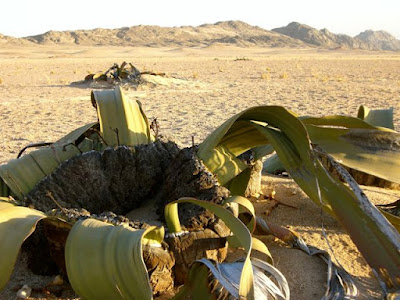Welwitschia's Herero name, onyanga, means "onion of the desert" as apparently its core is quite tasty and was used as food by Herero people in earlier times. (Now it is not anymore as it is protected by law).
Welwitschia looks truly bizarre as it consists only of two leaves, a stem base and roots. Its stem is woody and elliptical in shape. Its leaves are broad, leathery and strap-shaped. They lie on the ground and with time they become torn to ribbons, as they are never shed. According to carbon dating Welwitschias are on average around 500-600 years old, although some of the larger specimens are thought to be 2000 years old.
One of the oldest specimens, truly mirable Welwitschia:
